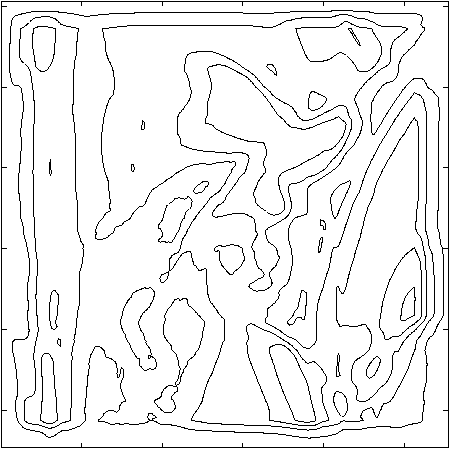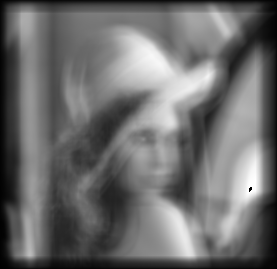Matched Filtering
Binary Matched Filtering with Pre-Processing
Binary Matched Filter with Pre-Processing
by Robert Sparr

First Approach
Our initial hope was that various human eyes would be similar enough to one another that an optimal filter for a specific eye would work acceptably well on other eyes. We considered an eye image to consist of a shape-defined contrast pattern, since the white of the eye tends to be much lighter than the iris and pupil or the surrounding skin tone.

Figure 1. Lenna's right eye, used as a matched filter



Figure 2. Lenna (shown for reference) and result of Lenna filtered with figure 1, contour plot and direct plot.
As figure 2 shows, the matched filter produces a blurred output consist with a low-pass filtering operation. The result does have a peak at Lenna's right eye (narrow with respect to the dimension of these figures). The peak does not rise far above the "floor" of the image, however, and other peaks are found at edges in the image near high pixel values, such as Lenna's shoulder and the back of the hat in the reflection.

jchen@micro.ti.com
tdorney@ti.com
sparr@owlnet.rice.edu
Last updated on May 3, 1997
Copyright © 1997 All rights reserved.